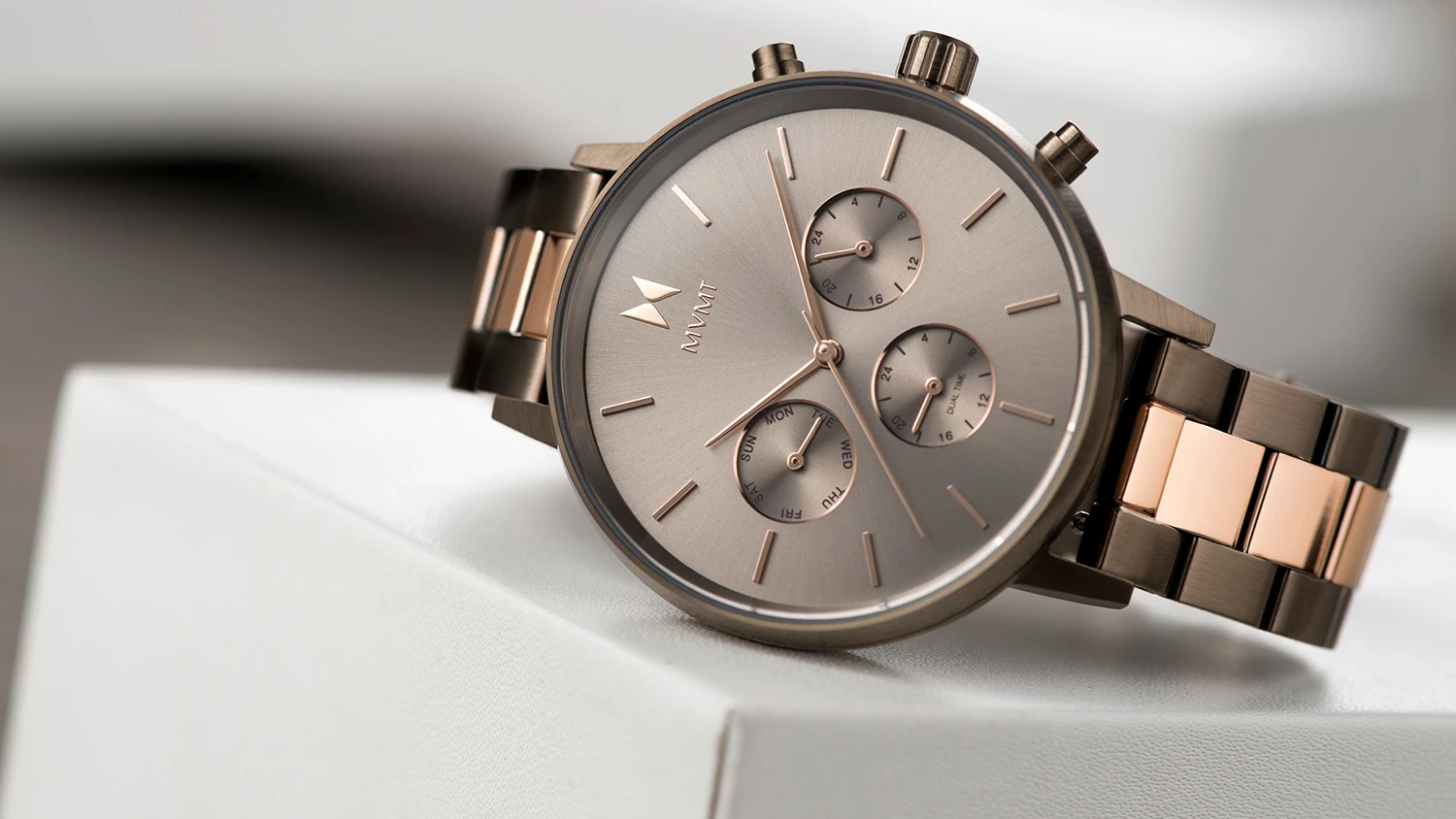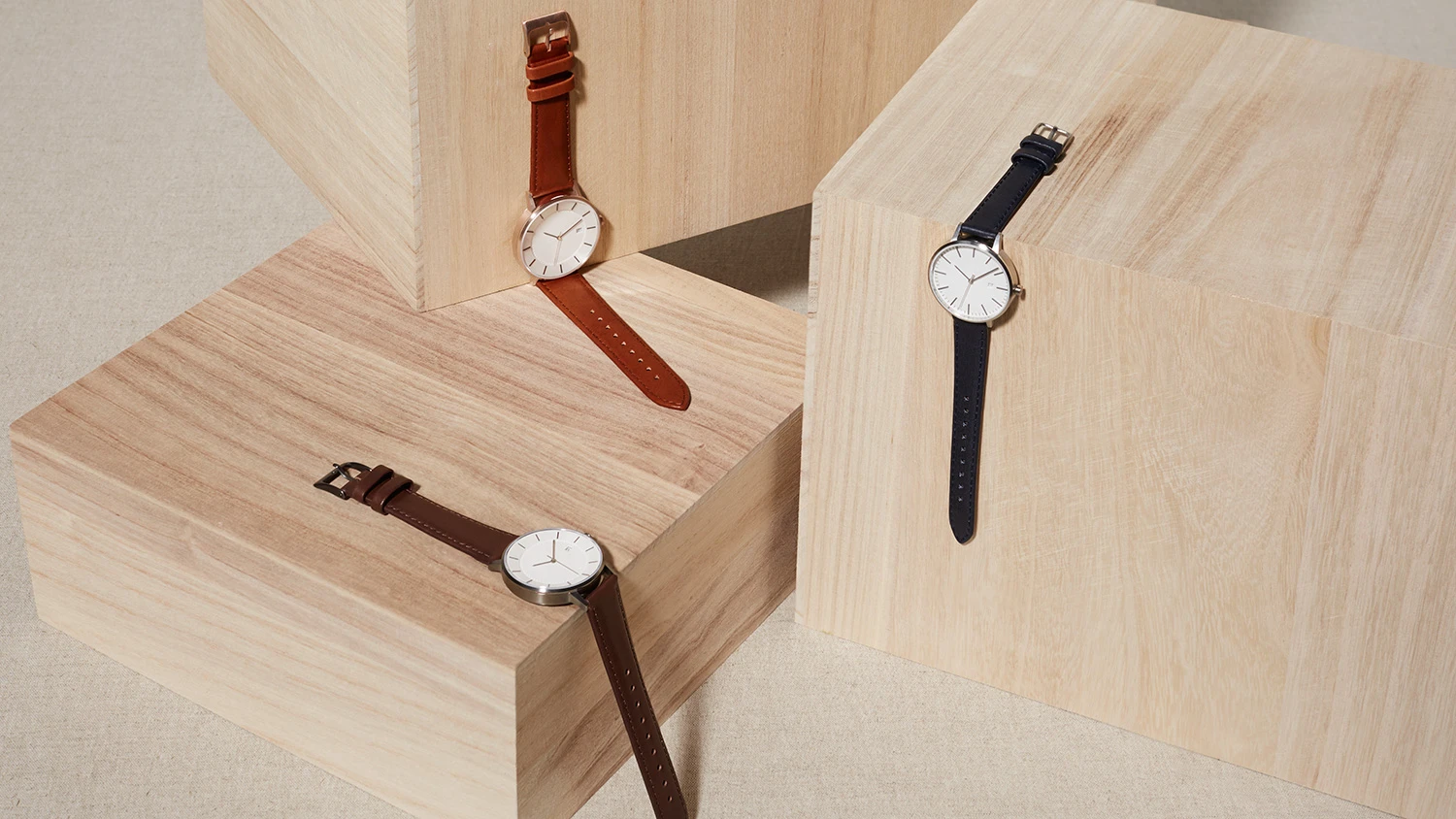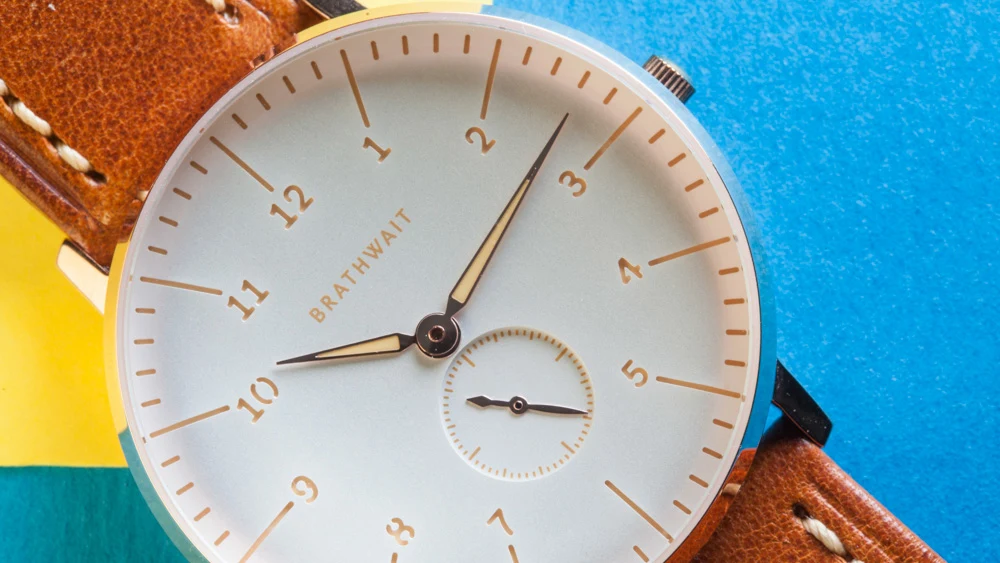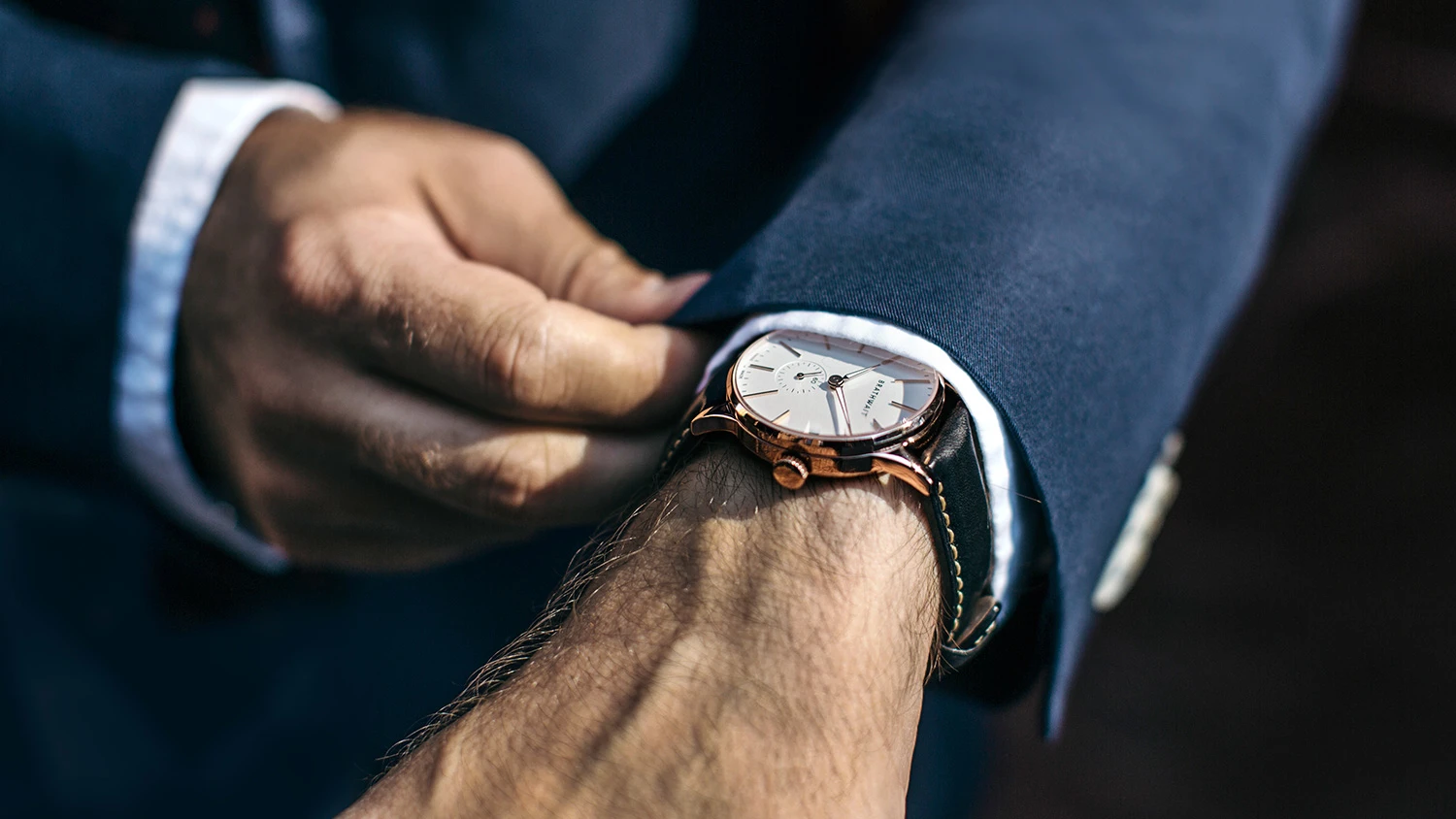Old school watches are back in vogue and millennials are leading the way—as both consumers and makers.
Everybody assumed gadgets like our smartphones and the Apple Watch would doom sales, but the opposite is true: Analog watch sales have been gradually rising since 2009. But the buzz around them (remember the Swatch craze?) certainly died down, as did our love affair with the luxury watches, like Rolex and Patek Philippe pieces.
In recent years, there’s been an explosion of affordable watch startups founded by millennials; these brands have brought the buzz back and are churning out cheaper Chinese-made quartz timepieces priced between $100 and $300 a pop, on par with Fossil.
One of the first brands to strike it big was Daniel Wellington. Founded in 2011 in Sweden by a 24-year old, the brand created a line of expensive-looking, minimalistic watches inspired by Rolex and Piaget timepieces, but priced under $200. By marketing through a network of Instagram influencers, the brand managed to rake in $200 million in revenue by 2016, selling over a million watches a year. This past February, Inc. named Daniel Wellington the fastest growing company in Europe. “It’s become the poster child of the online watch brand movement,” says Jennifer Chong, cofounder of Linjer, a Barcelona-based design studio that recently launched a watch on Kickstarter that generated $1 million in preorders.

Then there’s Rosefield, Oak & Oscar, and a spate of European watch brands that sound like Ikea furniture: Cluse, Klarf, and Aevig. You get the general idea. The question is, why this boom in watch brands? And why now?

The Analog Advantage
Artjem Weissbeck, the co-founder and CEO of Kapten & Son, launched his brand around the same time the Apple Watch came out. At first, it was unclear whether smart watches would squelch the analog watch market. They didn’t.
He’s noticed that while some consumers are looking for accessories that keep them more plugged in, others are looking for relief from the constant barrage of technology. “I think a lot about why millennials are buying watches,” Weissbeck says. “The core of the answer has to do with their psychology. Many of us are feeling that we’re not consuming technology anymore: technology is consuming us.”
Weissbeck points out that generation Z, who are now between 5 and 25, don’t remember a time before smartphones and may never have needed to wear an old-fashioned timepiece. But millennials have distinct memories wearing watches while they were growing up. There was a time when a watch was a necessity, rather than a lifestyle choice. At school, you needed a watch to time yourself during an exam or to be sure you weren’t late to your next class.
Many millennials have a nostalgic association with analog watches. They’re looking for timepieces that look more sophisticated than the plastic Swatch or Casio Baby G watches they wore when they were children, but don’t want to shell out thousands for a high-end luxury watch. “I think it’s just pleasant to feel that something simple–that you’ve had in your life for decades–still makes you happy,” he says.

They believed–given the glut in new watch brands–that other millennials also felt the same way. So, they decided to create an extremely minimalistic watch inspired by the Oslo Opera House and its clean lines. The idea is to make the experience of glancing at the watch straightforward— get the time and right back to your task. “As designers, a watch is a dream project for us to work on,” Chong says. “It’s a small canvas, but they are such complex machines, under the surface.”

Form Over Function
While Weissbeck and Chong focus on function, the folks at MVMT are obsessed with form. “It’s one of the few accessories that allow men to express themselves,” founder Jake Kassan says. “We saw that as an opportunity. As watch-makers we no longer need to think about functionality–and obsess over components–but we can build a lifestyle brand.”
Designing a watch to be a fashion accessory comes with some advantages. Many luxury brands are still focused on creating watches that are as complex and accurate as possible, with features like an indicator that tells you what phase the moon is in. MVMT, on the other hand, focuses entirely on aesthetics. Many MVMT watches don’t even have minute or hour markers on them so that the face can be as clean and minimalistic as possible. “It’s not that easy to tell the time on some of our watches,” Kassan says. “My thesis was that consumers don’t really care about the components of a watch or how precise it is because they tell time with their phones.”
They might be right. Over the last three years the brand has been in business, they’ve gone from making $300,000 on an Indiegogo campaign to selling more than a million watches. Kassan and his cofounder, Kramer LaPlante, have spent years crafting MVMT’s image, largely through social media. Taking a page from the Daniel Wellington playbook, the brand works with carefully selected influencers who photograph how the watches fit into a busy, fashionable life. The brand’s Instagram feed features 20- and 30-somethings in cities around the world, surrounded by skyscrapers and brick walls; or in some exotic vacation destination in Thailand or Brazil. The watches are styled to match slick suits or a wrist full of bracelets.
For consumers, treating a watch as a fashion item also changes their buying behavior. In the past, if you weren’t a watch collector, you’d generally buy one or two watches to wear everyday. MVMT’s customers sometimes buy many watches to match different looks. The brand also sells interchangeable straps, so a customer might buy one watch, but change the color of the strap to match their outfit. “We’re seeing customers buy several of the same watch with different color faces, just because our watches are so affordable,” he says.

Transparent Prices
Most of these new fashion watch brands haven’t focused on quality. All the watches I’ve described in this story manufacture their watches in China using inexpensive parts, rather than in Switzerland, where high-end watchmakers continue to craft luxury products. Part of this has to do with the fact that millennials tend to have less disposable income to spend on high-end watches. But millennials also have a different approach to luxury than baby boomers. Research shows that millennials don’t want to pay inflated prices for fancy brand names. They aren’t necessarily going to buy a Rolex or a Patek Philippe watch just because they saw an ad for it in a glossy magazine.
But as the market for $100 to $300 watches continues to grow, some brands are trying to differentiate themselves from the competition by emphasizing the quality of their products. Take Linjer. The brand focuses on creating products using the best possible materials, but charges fair prices thanks to a direct-to-consumer approach that avoids middleman markups. In 2016, when they launched their $249 watch inspired by the Oslo Opera House, they focused on sourcing high quality components: the movement is made by a Swiss quartz company called Ronda, the glass is made of sapphire crystal, and the strap is made from Italian vegetable- tanned leather. The whole timepiece is then assembled in China.
Linjer’s founders quickly discovered that there was a market for high-quality watches that weren’t overpriced. A year ago, their initial Kickstarter campaign generated $1 million in preorders, and the brand has continued to grow in watch sales. Khan believes that Linjer’s customers are more focused on design and craftsmanship than those drawn to brands like MVMT or Kapten & Son, who tend to be more fashion-forward. “Our customers love our watches as a design object,” he says. “They like our products because they are built to last and not go out of style.”

Torp spent two years exploring the watch industry, with the help of the watchmaker in the shop next door to him, to better understand the difference between cheap and expensive watches. He discovered that there is a lot of price inflation in the watch industry. The components in a $1,000 watch tend to be high quality, but they are not that expensive. He believed he could take those same components and create a watch of equivalent quality, without the markup. And to take his approach a step further, Torp would offer transparent pricing in the same vein as Everlane. On each product page, it lists out how much the components cost. For instance, the $159 watch uses a Swiss Ronda movement that costs $10, whereas the $359 watch uses a $55 automatic Miyota movement.

Ultimately, Torp believes that selling high-quality watches will insulate his company from changes in fashion trends or advancements in smartwatch technology. “People are seeing that the next generation of smartwatches has come out, rendering the previous generation obsolete,” Torp says. “That will never happen with an analog watch. If you buy a good watch, made of excellent parts, you can wear it forever.”
Recognize your brand’s excellence by applying to this year’s Brands That Matter Awards before the early-rate deadline, May 3.
